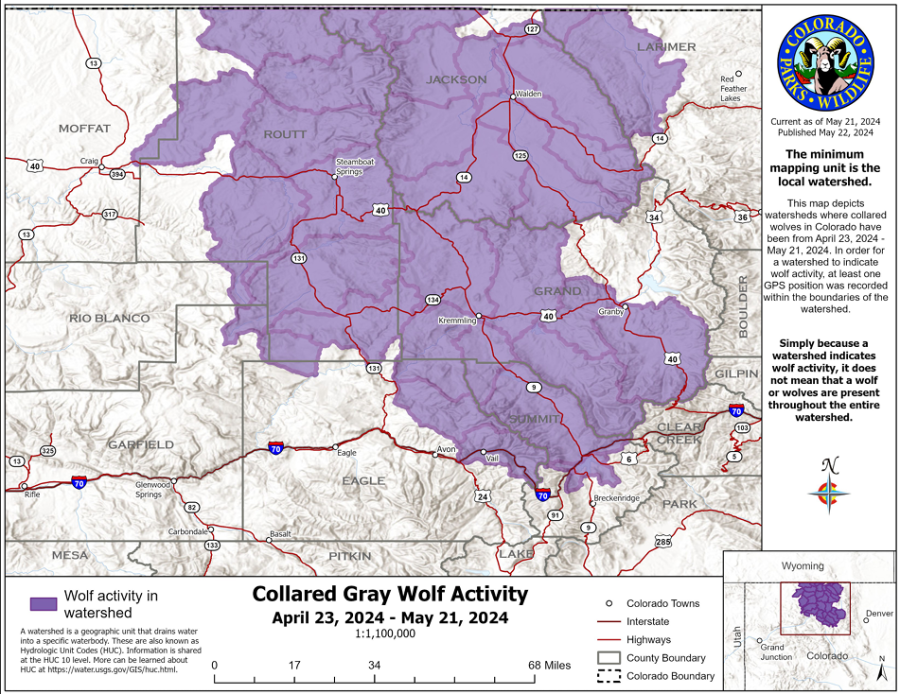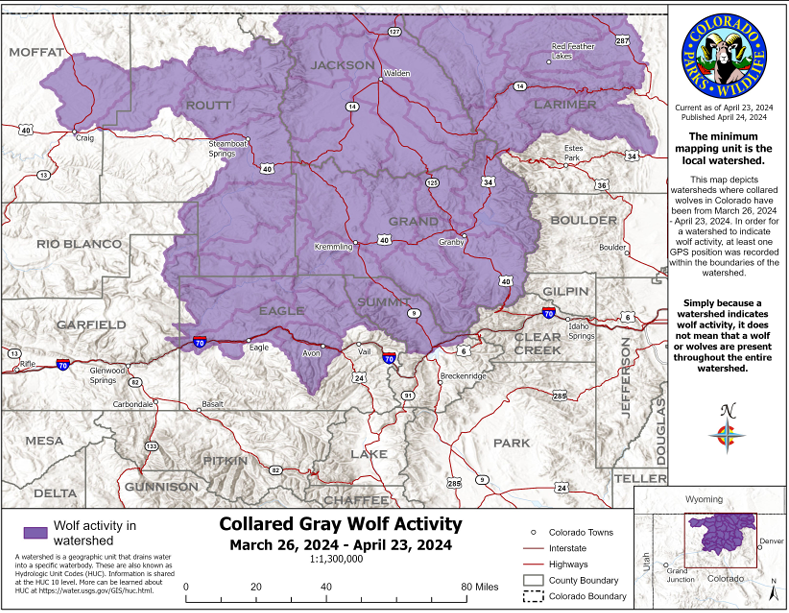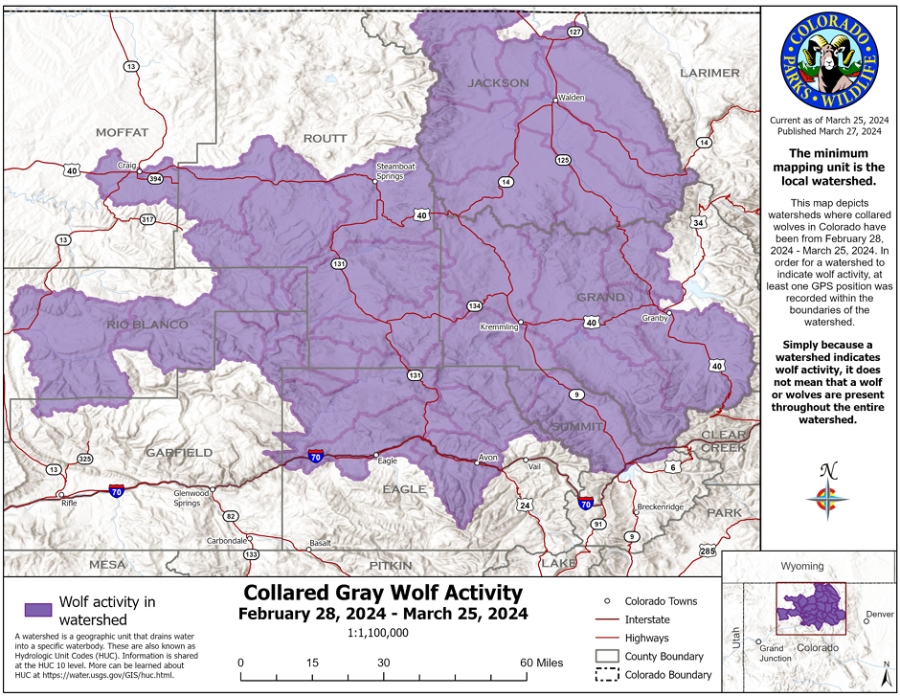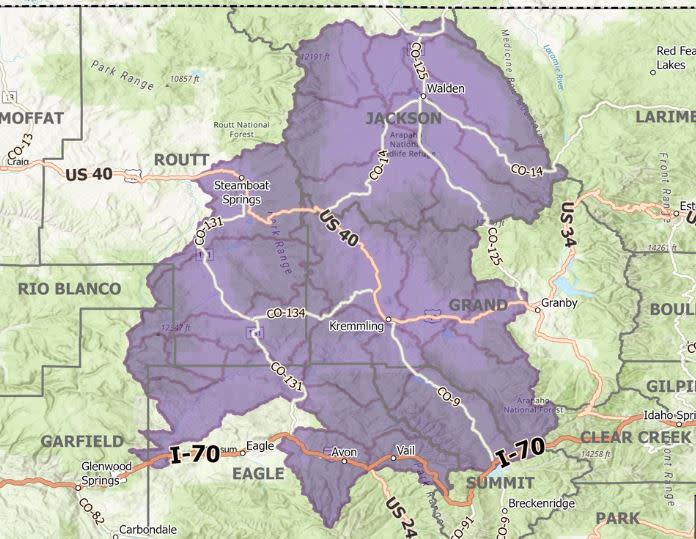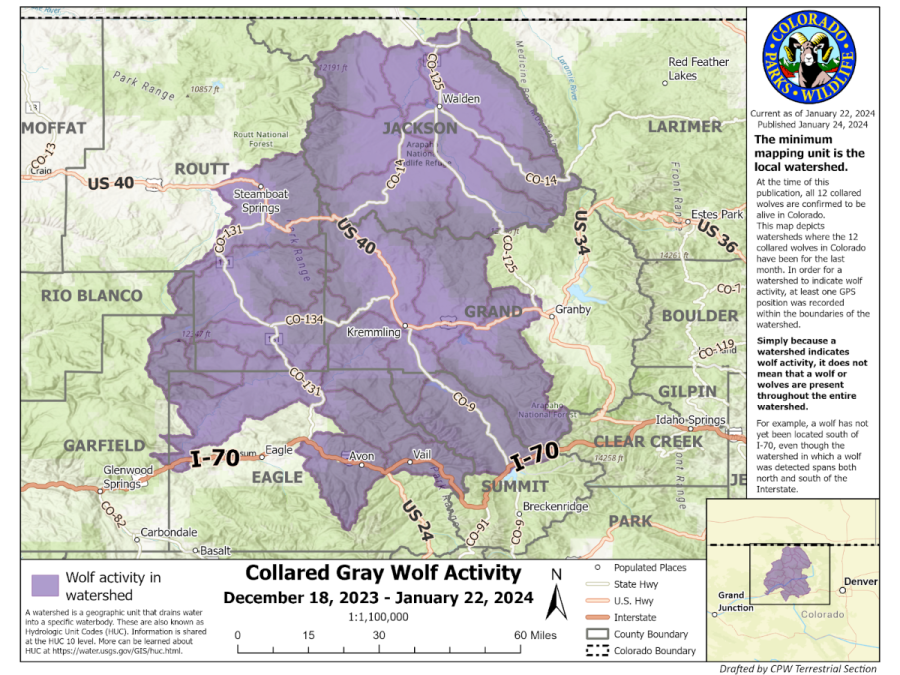Colorado’s wolves move toward Vail, Breckenridge in new watershed location map
DENVER (KDVR) — The newly reintroduced wolves in Colorado have entered watersheds that stretch across Interstate 70 for the first time — closer to the state’s beloved ski areas, according to a new movement map released by Colorado Parks and Wildlife on Wednesday.
Currently, the state is tracking seven collared wolves, as two of the 10 reintroduced canine’s GPS collars have malfunctioned and ceased sending data back to biologists. Another wolf was found dead in April. In a release sent Thursday, CPW reported that all of the wolves are still north of I-70, even though the two watersheds highlighted go beyond I-70.
Denver Zoo transports people Down Under in new habitat
The wolves without working collars are reported to be traveling with wolves whose collars have continued to function, allowing CPW biologists to monitor the wolves with malfunctioning collars still.
The state releases a monthly map showing the watersheds the animals’ GPS collars have been located within, which the state said allows for a wide enough margin to protect the reintroduced wolves from possible predators or tourists, but narrow enough to inform the public and agricultural producers about the predators’ whereabouts.
CPW also has a running list of wolf depredations across the state, showing what county, if it was confirmed and what was depredated (cattle, livestock guardian dog, etc.).
Colorado has four regional watersheds, divided into seven major river basins. It appears that at least one wolf is near the Eagle River basin (a tributary of the Colorado River), and was tracked into Gore Creek’s watershed, one of Eagle River’s tributaries.
This map shows collared gray wolf activity recorded by CPW from April 23 through May 21, 2024. (Courtesy Colorado Parks and Wildlife) This map shows collared gray wolf activity recorded by CPW from March 26 through April 23, 2024. (Courtesy Colorado Parks and Wildlife) This map shows collared gray wolf activity recorded by CPW from Feb. 28 to March 25, 2024. (Courtesy Colorado Parks and Wildlife) Colorado Parks and Wildlife is tracking two wolves that have made their way into Moffatt County. A map shows where 12 collared wolves have been over the last month. (Map: Colorado Parks and Wildlife) This map shows collared gray wolf activity recorded by CPW from Dec. 18, 2023 to Jan. 22, 2024. (Courtesy Colorado Parks and Wildlife)
That means at least one wolf has been found in watersheds that share borders with the Clear Creek watershed — which filters down from the Eisenhower Tunnel on I-70 past Georgetown, Idaho Springs and into Golden.
Much of the conflict involving the wolves has been reported in Grand and Jackson Counties, as well as Larimer County. Cattlemen and ranching associations asked the state to lethally remove two of the wolves after repeated depredations on cattle in April, but the state refused. CPW Director Jeff Davis wrote to the groups that there was likely a mated pair denning in the area, leading to repeated cattle deaths, mostly of calves.
A lengthy investigation into a reintroduced wolf’s corpse that was found in Larimer County in April showed that the canine likely died of natural causes, likely due to predation of a mountain lion.
Copyright 2024 Nexstar Media, Inc. All rights reserved. This material may not be published, broadcast, rewritten, or redistributed.
For the latest news, weather, sports, and streaming video, head to FOX31 Denver.
